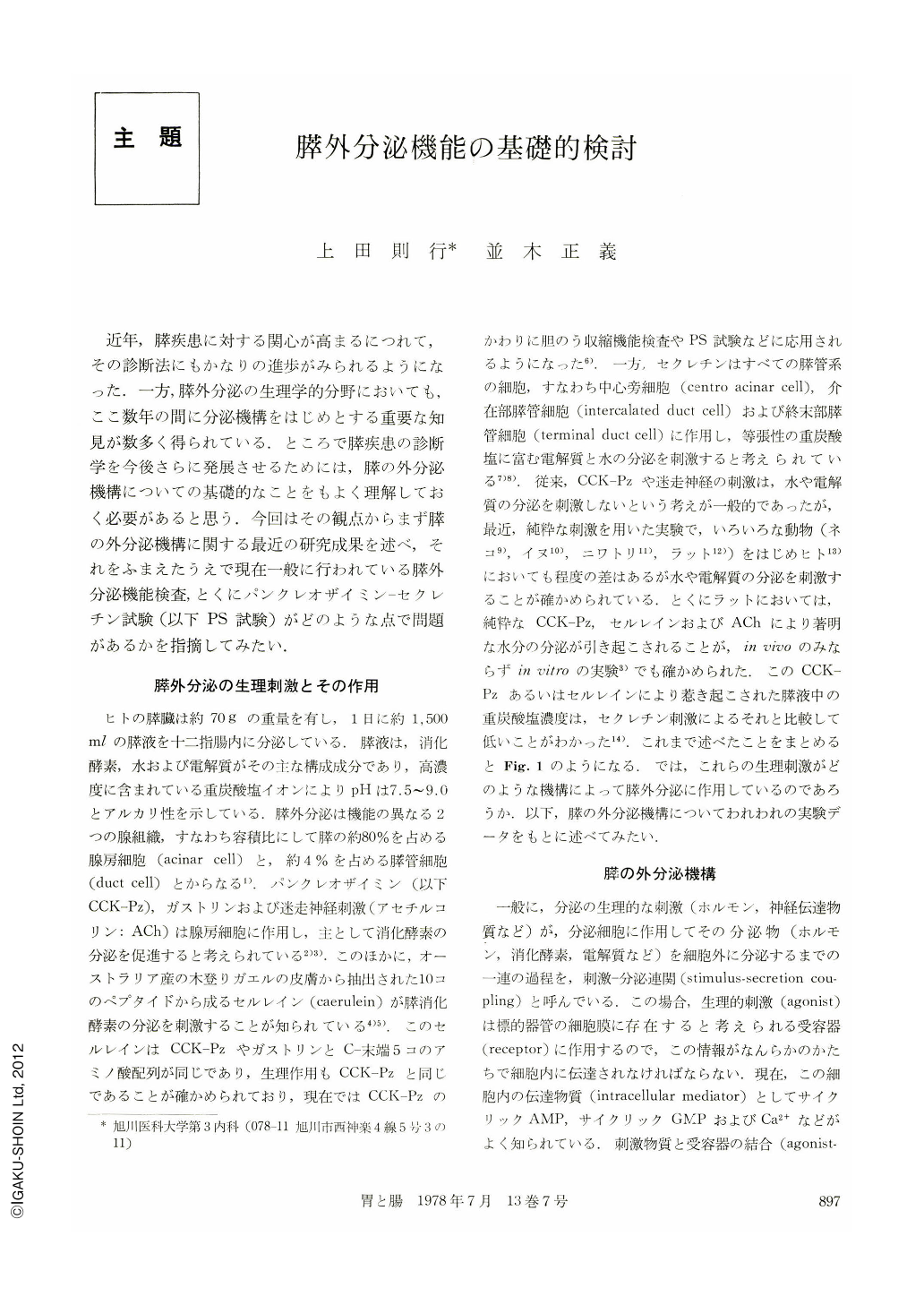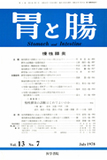Japanese
English
- 有料閲覧
- Abstract 文献概要
- 1ページ目 Look Inside
近年,膵疾患に対する関心が高まるにつれて,その診断法にもかなりの進歩がみられるようになった.一方,膵外分泌の生理学的分野においても,ここ数年の間に分泌機構をはじめとする重要な知見が数多く得られている.ところで膵疾患の診断学を今後さらに発展させるためには,膵の外分泌機構についての基礎的なことをもよく理解しておく必要があると思う.今回はその観点からまず膵の外分泌機構に関する最近の研究成果を述べ,それをふまえたうえで現在一般に行われている膵外分泌機能検査,とくにパンクレオザイミン-セクレチン試験(以下PS試験)がどのような点で問題があるかを指摘してみたい.
A comprehensive study on the exocrine pancreatic function and the clinical methods currently employed in this area has been made. Acetylcholine and cholecystokinin-pancreozymin act on acinar cells to not only secrete digestive enzymes, but to stimulate water and electrolytes secretion low in bicarbonate. Ca++ is necessary for the secretion of digestive enzymes; on the other hand, Na+ pump sensive to ouabain, is related to the secretion of water and electrolytes. Secretin acts on the duct cells to stimulate the secretion of water and electrolytes rich in bicarbonate. A small amount of digestive enzymes is also stimulated by secretion. The Na+ pump and the Na+ -K+ exchange system are thought to be related to the secretion of electrolytes. The action of secretion on the duct cells is mediated by cyclic AMP.
The exocrine function of the pancreas shows great reserves; the normal range of the PS test has some latitude, so it is not always easy to distinguish abnormal results from normal ones when using this test.
In this paper we have also described some of the procedures employed presently in the PS test at the clinical level, and we have pointed out some of the factors which may influence the results.

Copyright © 1978, Igaku-Shoin Ltd. All rights reserved.


